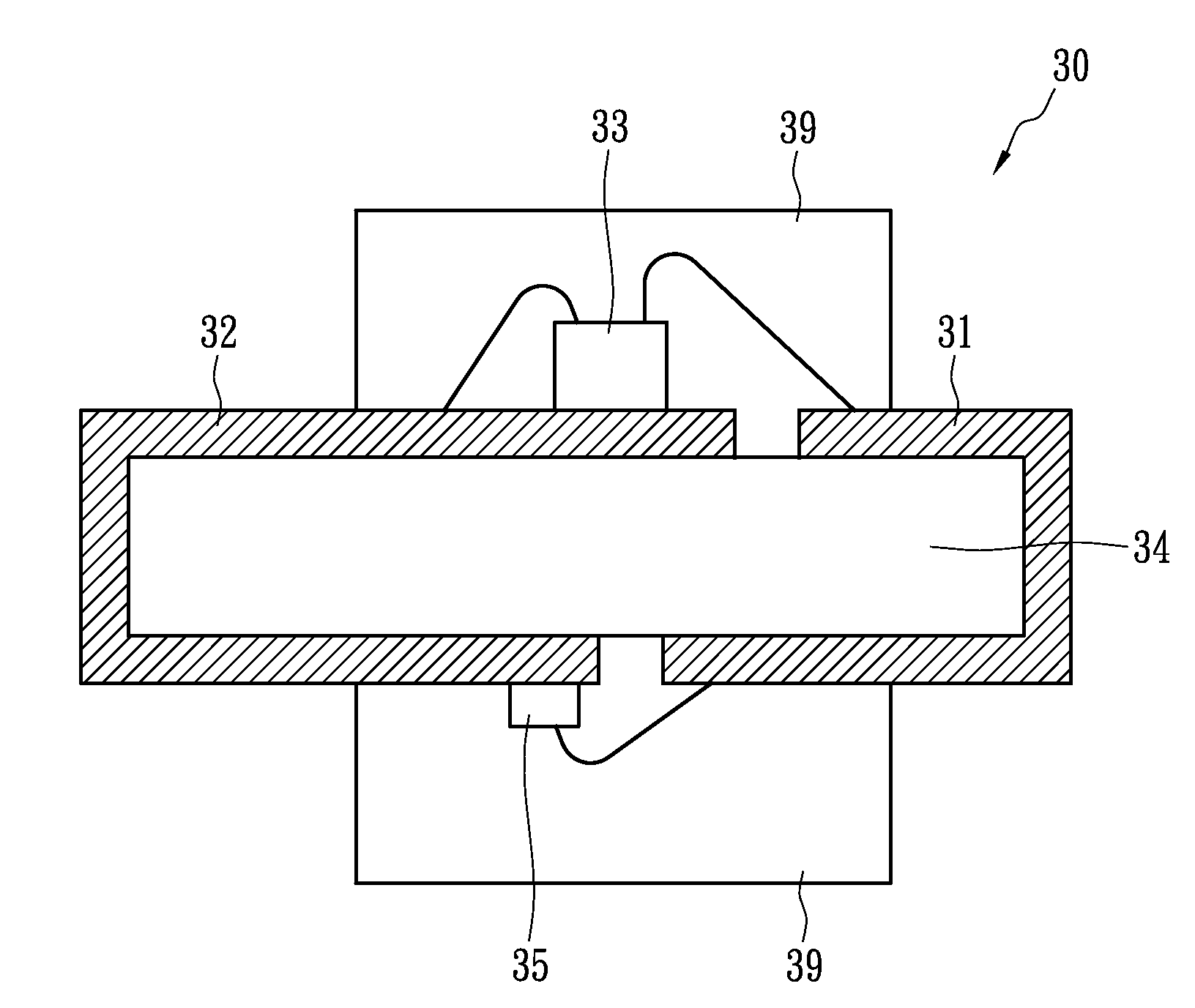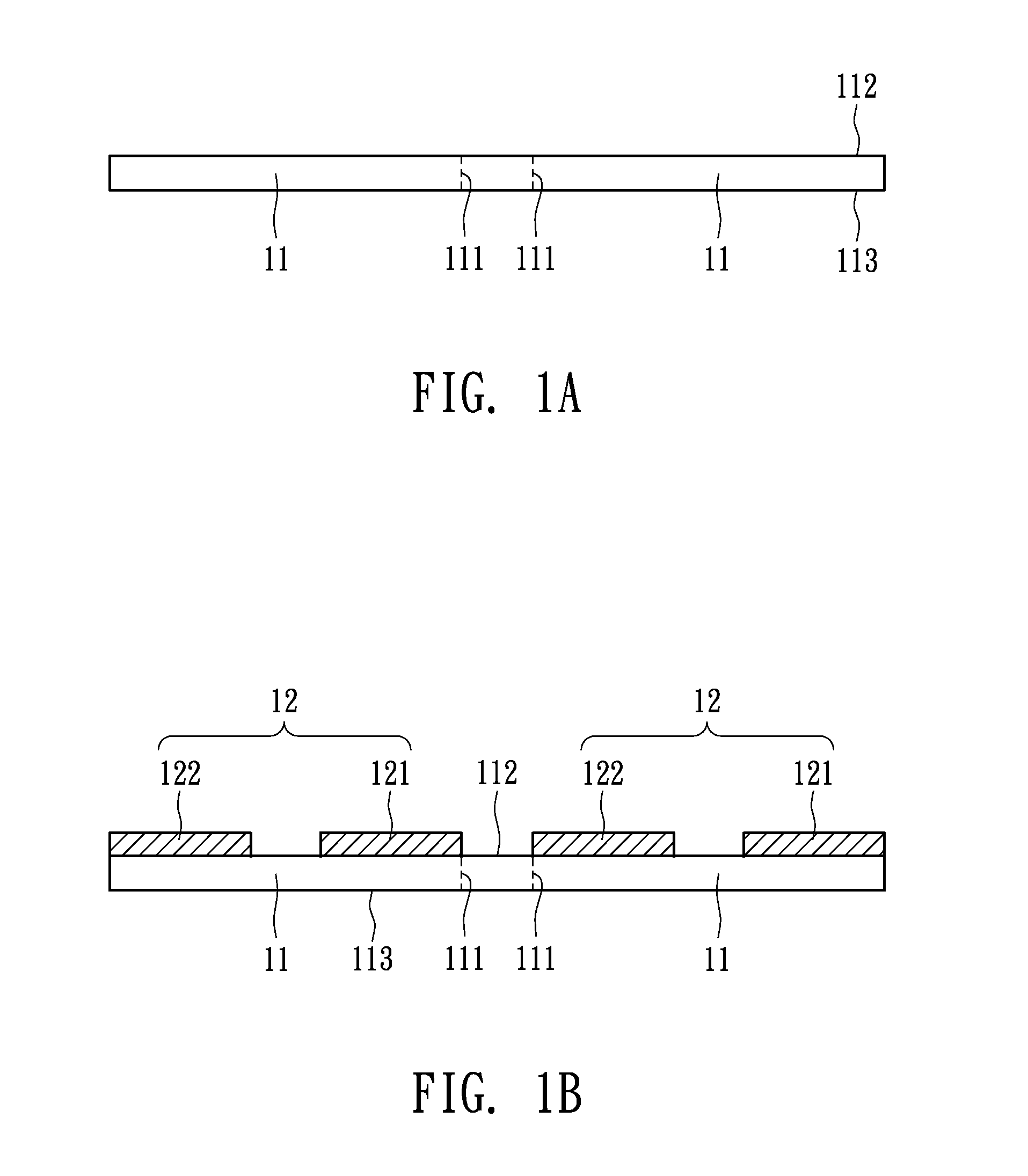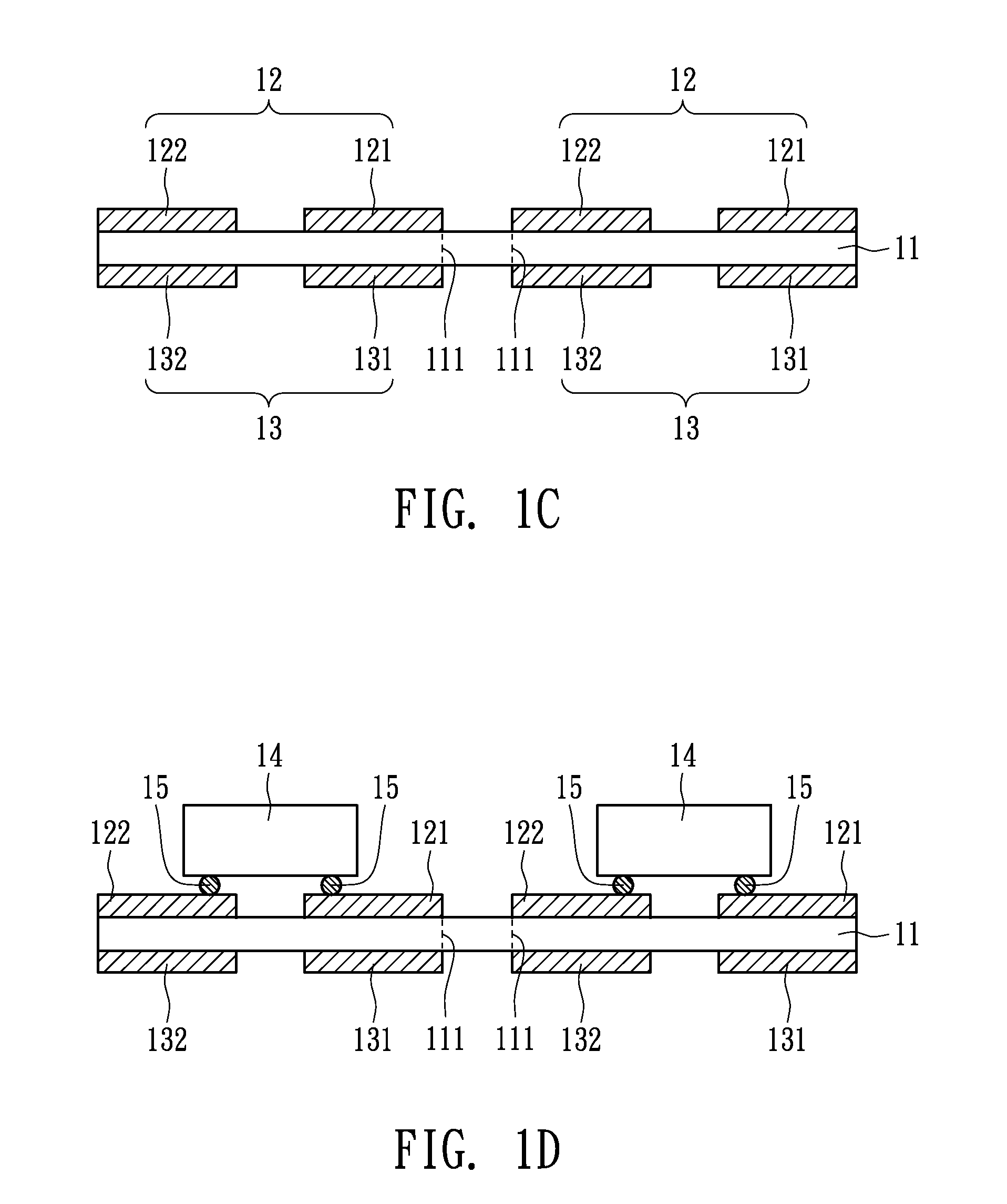Fabricating methods of photoelectric devices and package structures thereof
- Summary
- Abstract
- Description
- Claims
- Application Information
AI Technical Summary
Benefits of technology
Problems solved by technology
Method used
Image
Examples
Embodiment Construction
[0035]FIGS. 1A-1G are the diagrams illustrating the steps of the fabricating method of a photoelectric device in accordance with present invention. The cutting lines on the ceramic substrate 11 are formed with a LASER or a mold pressing. The most use material of the ceramic substrate is AlO. The other substitute materials comprise AlN, BeO, SiC, glass, Al, or diamond. The slurry preparation or slip preparation is the first step for making the ceramic substrate 11. The slurry is the combination of organic materials and inorganic materials, wherein a constant ratio of ceramic powder to glass powder are mixed for the inorganic materials, and organic materials comprise polymer binder, plasticizer and organic solvent, etc. The purposes of adding the glass powder into the inorganic material include adjustments of the thermal expansion character parameter of the ceramic substrate 11, adjustments of the character of a dielectric constant, and adjustments of a sintering temperature.
[0036]As ...
PUM
 Login to View More
Login to View More Abstract
Description
Claims
Application Information
 Login to View More
Login to View More - Generate Ideas
- Intellectual Property
- Life Sciences
- Materials
- Tech Scout
- Unparalleled Data Quality
- Higher Quality Content
- 60% Fewer Hallucinations
Browse by: Latest US Patents, China's latest patents, Technical Efficacy Thesaurus, Application Domain, Technology Topic, Popular Technical Reports.
© 2025 PatSnap. All rights reserved.Legal|Privacy policy|Modern Slavery Act Transparency Statement|Sitemap|About US| Contact US: help@patsnap.com



